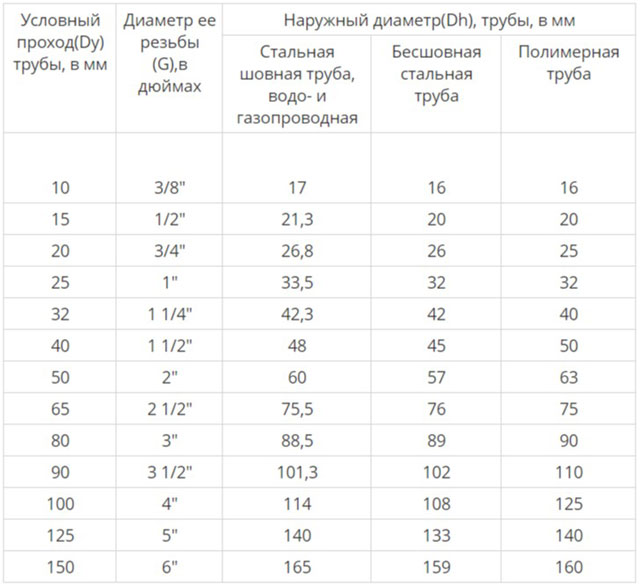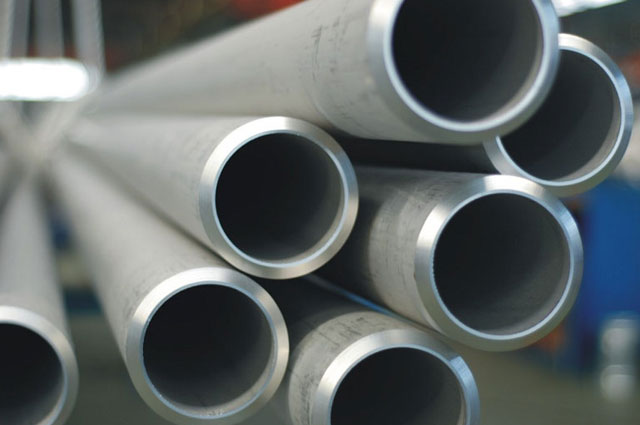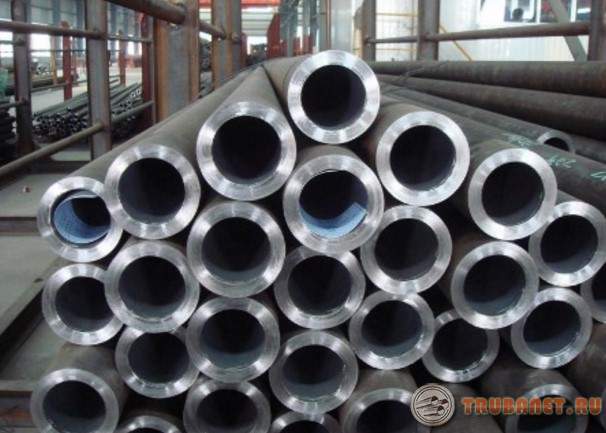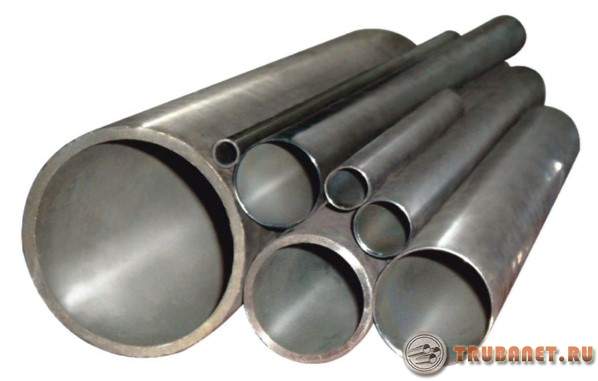Water pipe in inches. Diameters of pipes
Usually, in the notation of the diameters of pipes, values \u200b\u200bare used in inches, so we suggest you get acquainted with the table, where the values \u200b\u200bin inches are translated into millimeters. In scientific literature, use the concept of "conditional passage".
Under "Conditional Passage" Understand the magnitude (conditional diameter), conditionally characterizing the inner diameter and does not necessarily coincide with the actual inner diameter. Conditional passage is taken from a standard row
1Dype \u003d 25.4 mm
Please note that if we take a pipe for 1 "(one inch), then the outer diameter is not equal to 25.4 mm. Here it begins the confusion -"Pipe inches". Let's try to clarify this question. If you look at the parameters of pipe cylindrical thread, then notice that the outer diameter (at one inches) is 33.249 mm, and not 25.4.
The nominal diameter of the thread is conditionally attributed to the inner diameter of the pipe, and the thread is cut on the outer diameter. Here we get the diameter - 25.4 mm + two thicknesses of the pipe wall ≈ 33.249 mm. Thus appeared"Pipe inch".
| Diameters in inches | Adopted conditional diameters of pipes, mm | The external dimensions of the steel pipe according to GOST 3262-75, mm |
| ½ " | 15 | 21,3 |
| ¾ " | 20 | 26,8 |
| 1 " | 25 | 33,5 |
| 1 ¼ " | 32 | 42,3 |
| 1 ½ " | 40 | 48 |
| 2 " | 50 | 60 |
| 2 ½" | 65 | 75,5 |
| 3 "" | 80 | 88,5 |
| 4 " | 100 | 114 |
The company KIT Gdomododovo carries out the installation of water treatment systems, maintenance of water treatment systems.
We also offer you an innovative professional preparation for cleaning sewer pipes and eliminating smells of lycvazim.
With the company KIT reliably and convenient!
Metal pipes, despite the appearance in the recent decades of products from polymers and combined materials, in many industries still retain the leading positions.
Therefore, the production of such products of almost any size is widely established, which allows you to choose the desired products to any task, but also puts the problem of the problem of the correct calculation of the design and selection of products. Among the main methods used in the calculations, the internal and outer diameters of steel pipes can be noted, which will be discussed.
The need to standardize pipe measurements
The main purpose of establishing standard sizes of products, including wall thickness, length, external and inner pipe diameter - simplification of work with these products at all stages: from the design to the arrangement of the contour, scheduled or unscheduled repair and dismantling the system.
In order not to set impracticable tasks and excessively not to complicate the production of products, gtales and that only the main, the most necessary sizes of pipes are regulated, consistent with which the designers spend all further calculations.
The main parameters of the pipe
These parameters include:
- Conditional diameter (d y, d y) - is an internal diameter of metal pipes calculated in millimeters or a rounded value in inches.
- Nominal diameter (DN, D N).
- Outer diameter of the iron pipe. In addition to the classification of products into three groups: Small - with a parameter 5 ... 102 mm, average - values \u200b\u200bin the range of 102 ... 426 mm, large - from 426 mm, this measurement allows you to calculate the amount of paint or other material necessary for insulation pipes.
- Wall thickness - The inconspopling parameter is established by gtalation, depending on the nominal diameter of the metal pipe, is often used in strength and hydraulic calculations.
- Inner diameter - the main characteristic of both the pipes themselves and the connecting reinforcement, in particular, couplings and corners.

The compliance of pipe diameters. Standards must be observed in the production of not only metal products, but also products from other materials - whether polymers of all brands, combined materials, asbestos-cement or glass.
For products from each material installed its ratios of parameters that allow producing products using minimal amount Resources, but still keeping its compliance with the technological requirements and safety standards of a person and the surrounding world.
Tables of product dimensions
To facilitate the selection of products under the planned or already operating production line or the communication system, a table of diameters of metal pipes and products from other materials are composed.
View them full versions It does not represent difficulties. As part of the article, it should be transferred to the measurement of products used in them.
Each table may include as full list The above parameters and some of them. For example, a conditional passage (in millimeters), the diameter of the thread (in inches), the outer diameter and the thickness of the wall (both in millimeters).

The diameters of steel pipes by tradition are indicated in inches. Such designations are more concise, since they use only integers or simple fractions: 1 ", 1½", etc.
It is more difficult, when it is necessary to connect steel pipes with plastic, the dimensions of which are always indicated in millimeters. However, in this case, the wizard will help the table of relations.
Standard internal diameters
The standard range includes the following values \u200b\u200bof internal diameters in millimeters: 6, 10, 15, 20, 25, 32, 40, 50, 65, 80, 100, 110, 120, 125, 200, etc.
Although it is possible using complex formulas, calculate the necessary diameter of pipes for each specific circuit or installation, usually just purchased products of traditional sizes.

For example, steel pipes with diameters 15, 20 or 32 mm are used to arrange communication networks.
Pipes for sewage can have a cross section in the range of 50 ... 100 mm.
Calculation of the diameter value of the pipe
This operation is necessary when it is required to calculate the volume by the portable pipes of the working medium, in particular, in order to ensure a uniform pressure on all parts of the pipeline.
The internal diameter value can be found in the table or calculate the formula.
For example, for pipe heating systems:
D \u003d √ ((314 · q) / (v · Δt))
where D is the inner diameter, mm;
Q - thermal flow, kW;
Δt is the difference in the initial and final temperature of the medium, ° C;
V is the speed of the medium, m / s.
In addition to the calculations manually and using tables, it is possible to calculate in specialized computer programs - today it is the fastest and reliable way.
Steel, metal-plastic, polypropylene pipes Widely used in the construction of residential buildings and other buildings, when assembling transport systems, etc. On sale Available a large number of of such products with different size. When choosing, in addition to the material, the main criterion is the diameter.
One of the most widely used products of this type is the pipe, the inner diameter of which is 32 mm. Such products refer to the category of small pipes. Most often they are used for the device of the sewer system.
To designate internal diameters, manufacturers usually use inches. Therefore, many who are faced with the need to use such products are wondering: a diameter of 32 mm is how much in inches? Calculate this parameter by transferring in inches by the generally accepted value 1 "will not work, because to designate manufacturers use the non-standard value of inches. Given the value of inches, it is also worth take into account the fact that when calculating the diameter in inches manufacturers determine the conditional passage according to GOST 355-52. Thus, the pipe with value 1 "translated into the metric system has an inner diameter of 25 cm, and the outer can be 33.5 mm. For other internal diameters, the following values \u200b\u200b(left to millimeters left):
- 10 - 3/8 ".
- 15 - 1/2 ".
- 20 - 3/4 ".
- 32 - 1 1/4. "
- 40 - 1 1/2 ".
- 50 - 2.
These designations are relevant not only for steel, but also for polymer pipes, brass, copper. That is, regardless of the material of the manufacturer, the diameter of 32 mm in inches will still correspond to 1 1/4 ".
Inch thread
Measure this parameter in mm independently easily. Enough to have a special tool.
How to determine the weight of the pipe
 There are several ways with which you can learn a lot of pipes. The easiest and fastest method is to use the directory or receive information on the thematic site. The profile tables indicate the calculated weight of 1 perm. For various sizes.
There are several ways with which you can learn a lot of pipes. The easiest and fastest method is to use the directory or receive information on the thematic site. The profile tables indicate the calculated weight of 1 perm. For various sizes.
To date tables of steel pipe diameters relevant for the reason that almost all spheres of construction use pipes from different species Plastic and metal. In order to easily understand this variety of material and learn how to combine them, regulatory documents were developed, the table of the diameters of steel pipes and their compliance with polymer pipes. To calculate the weight of the pipe, or the pipe length you can use the pipe calculator.
Table of steel and polymer pipe diameters.
|
Outer diameter (DH), Pipes, in mm according to GOST and DIN / EN |
|||||
|
Conditional (DY) Pipes, |
threads pipe (G) in inches |
Outer diameter of pipe D, mm |
|||
|
Steel pipes water-base |
Steel electros welded and seamless |
Polymer PE, PP, PVC |
|||
Conditional diameter (DU, DY) is the nominal size (in millimeters) of the inner diameter of the pipe or its rounded value in inches.
Conditional pass It is a rounded nominal size of the internal diameter. It is always rounded in a big way. The value of the conditional diameter of steel pipes GOST 355-52 is determined.
Legend and GOST:
- DIN / EN - the main EurosorTal for steel pipes by DIN2448 / DIN2458
- Steel water pipes - GOST 3262-75
- Steel electric welded pipes - GOST 10704-91
- Pipes steel seamless GOST 8734-75 GOST 8732-78 and GOST 8731-74 (from 20 to 530 mm).
Classification of steel pipes on the outer diameter (DN).
Small outer diameter steel pipes It is used for the construction of water supply systems in apartments, houses and other facilities.
Middle diameter steel pipes It is used for the construction of urban water pipes, as well as in industrial systems for collecting crude oil.
Large steel pipes We are necessary for the construction of main gas and oil pipelines.
Standard internal diameter of pipes.
There is a standard of the inner diameter of pipes, which is adopted in most states of the world. The inner diameter of the pipes is measured in millimeters. The following presents the most common internal dimers of pipes:
- 200, etc.
Inner diameter of steel pipesdenotes (DVN). There is also a certain standard of pipe diameter, it is indicated by the term "conditional pass (diameter)". It is denoted.
The inner diameter of the pipe You can calculate according to the following formula: DVN \u003d DN - 2S.
In the process of repair and construction, pipes often use pipes. They make it possible not only to bring heat, gas, water, but also showed themselves as durable and reliable building material.
These products are slightly weight and simplicity of installation. If an emergency situation occurs in such a pipeline, then the repair is carried out very quickly, for this it is enough to replace the outstanding part.
Classification of steel sorting
The classification of steel pipes is also produced in diameter. He becomes their main characteristic.
The diameter of steel pipecase materials determines the purpose and length of the highway, the possibility of transporting a different medium is also dependent on this.

All values \u200b\u200bof the size of steel products regulate the regulatory requirements of the GOST, and each type of pipe rollers meet their standards.
In the formula for the designation of the diameter, simplified values \u200b\u200bare put, and in practice everything is more difficult. Here, when classifications, its following varieties are distinguished:
- Outer. This diameter is denoted by the day. Small sizes include options from 5 to 102 mm. Medium-sized values \u200b\u200bare from 103 to 426 mm. .
- Medium (dvN). This physical characteristic is displayed in mm. It is very important for classification, as it determines the system's permeability as a whole.
- Conditional pass. These dimensions of the inside of the pipe are shown in mm. And inch numbers need rounding and are used to dust pipeline with fittings.
- Nominal. This indicator is equal to the conditional passage, but it differs more high levels accuracy.
- Wall thickness (s). This physical characteristic is expressed in millimeters, it is displayed on the skipping capabilities of the system and on its diameter. When classifying the dimensions of steel pipecase materials, this figure is determined by calculating the difference between the inner and external diameter.
Metal Soldation Classification
The classification of metal pipes in diameter is very important. This rolling sorting sizer has an impact on its transmittance and on the scope of use. Also, these dimensions determine the cost of metal pipes.

Metal pipe rolling materials are very extensively used in various spheres of human activity. This construction, chemical and food production, agriculture, Mechanical Engineering and others.
This list can still be continued, but it is already clear that this product is very popular with consumers. In this regard, it is stated by an extensive choice of configurations and dimensions.
Currently manufactured seamless and. The ruler of the welded goods is characterized by a simple production process, and accordingly, their price is not as high as seamless analogs. But the latest options show higher reliability, also their resistance to the mechanical type of load is an order of magnitude higher.
Video
To extend the service life a sort of ferrous metal is exposed to galvanized. Regardless of the embodiment of the surface part inside, metal products demonstrate a smaller possibility of skipping than the analogues of the polymer.
The most important criterion for selection of these goods is the indicator of the cross-sectional dimension. In order to create a reliable and durable junction, it is necessary that the size of metal pipes responded to the dimensions of fittings.
IMPORTANT! Together with the cross-sectional dimensions, the wall thickness is also important. Having this accurate indicator, you can still during the development of the project, determine the maximum possible load on the design.
Usually in the marking of products made of steel and cast iron use internal size, and copper products are labeled according to the outdoor girth.
Table Classification Tables
To determine the exact dimensions of products prepared for the connection, it is very convenient to use tables. For example, pipe rolling materials from steel are denoted in inches.
Video
This dimension is used when classified all over the world. And the pipes from the polymer are customary to designate in millimeters. Accordingly, to properly select the parts when connecting the pipe roller from a variety of materials, you need to know the principle of the diameters. These values \u200b\u200bhelp set tables.
The classification of pipes in diameter is set out in the table provided:
Do tube sorting Thread volume (inches) External Ø water-gas pipes from steel External Ø seamless pipe rods of their steel External Ø polymer pipes 10 3/8 17 16 16 15 1/2 21,3 20 20 20 3/4 26,8 26 25 25 1 33,5 32 32 32 1 1/4 42.3 42 40 40 1 1/2 48 45 50 50 2 60 57 63 65 2 1/2 75,5 76 75 80 3 88,5 89 90 90 3 1/2 101,3 102 110 100 4 114 108 125 125 5 140 133 140 150 6 165 159 160 This table provides the values \u200b\u200bof the UD in mm, and their corresponding external indicators different species Pipe sorting: seamless, electrical welded, metal-plastic. The difference in this situation can reach 1.7 cm.
To choose the details for the gas supply and water supply highway will help to make the following table:
Volume in inches Volume in mm 1/2 15 3/4 20 1 25 1 1/4 32 1 1/2 40 2 50 2 1/2 65 3 89 4 100 The standard values \u200b\u200bof the designation of the diameter of steel pipes are becoming such: 6, 10, 15, 20, 25, 32, 40, 50, 65, 80, 100, 110 and on. Ud of this pipe roller, which is shown in inches, if necessary, translation to the metric measurement is rounded in the direction of magnification.
Video
Most often apply the following diameters of these products: from 426 to 1220 mm, and in the following networks:
- plumbing;
- gas pipeline;
- drain;
- irrigation.
For a network, drilling water and heat to multi-storey and private houses, use pipes of small diameter. Middle diameter variants are used for risers in the infrastructure structures of the city and the oil industry.
For similar tables, the diameters of the pipe roller from copper, brass, plastic are determined. Using this data it is easy to connect elements from various materials. If fittings are used for work, then the dosilet process is easier, as these connecting elements have these nuances already taken into account.
Classification of pipes for a water supply network
Many faced problems or repair of the water supply network. Therefore, the classification of water pipes in diameter will be useful information for many.
Video
For water supply systems, the following types of pipes are used:
- Metal.
- Plastic.
- Metal plastic.
The modern market offers a large number of different options, with the arrangement of water supply systems, it is necessary to connect elements from different materials. Using the metric system during operation, it has to take into account its numerous conventions. The main in it are: the conditional diameter and nominal.
The methods of approach to their definition are slightly different, but as a result they determine the external size of the pipeline.
From what diameter of the pipe rolling is used when laying a water supply network, its throughput depends. To calculate the bandwidth uses tables and various formulas.
All this helps to simplify the calculation process. But, this work is not so simple, so for the plumbing highways in the apartment comes differently. For wiring inside the apartment, products are used on 3/8 and ½ inches, and for risers put products on ¾ or 1 inches.
Video
The appearance of uniform parameters becomes an additional possibility with large-scale network design, as the masters are engaged in developing and designing a lot of time, having accurate parameters of the external size of the sorting.
The classification of pipes in diameter allows you to select various taps, adapters and other parts by one internal diameter. As a result, not only an experienced master, but also a novice specialist will be able to properly collect the highway.


